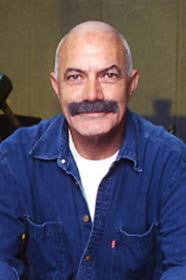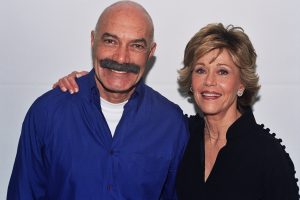




Expertly playing off of teenage angst, “Rebel Without a Cause” is a crucial film in the way that it defined modes of expression for that angst.
Nicholas Ray’s film announced the rise of juvenile delinquency among white, upper-middle class America.
It’s also the most influential youth movie in American film history. As the critic Jim Hoberman has observed, “Teenagers made “Rebel Without a Cause,” but “Rebel Without a Cause” also defined teenagers.” Indeed, the very notion of the “teenager” as a powerful cultural identity and social force would be inconceivable without the influence of Nicholas Ray’s 1955 film.
Just three weeks after James Dean’s death, on September 30, 1955, “Rebel Without a Cause” was released. Dean was on his way to a sports-car race in Salinas, California, when he ran his silver Porsche off the highway and into the mythology of popular culture. “Rebel” subsequently opened at New York City’s Astor Theatre on October 26, 1955 and in Los Angeles on November 9th, to a fanatical response.
The 24-year-old Dean quickly became the first of the tragic–and legendary–figures of the then just burgeoning youth culture. The appeal of “Rebel” cannot be separated from the appeal of Dean, who the audience, even in 1955, knew was a truly doomed youngster, grapple with the pains of growing up.
Dean’s dramatic death, combined with the timely release of “Rebel,” was the actor’s ticket to his status as a legend. In 1956, well after his death, Life magazine reported that Dean was receiving 2,000 fan letters a week. Warner was still getting up to 7,000 fan letters a month as late as 1957.
When Dean’s totaled Porsche was subsequently exhibited in a Los Angeles bowling alley, a staggering 800,000 tickets were sold. The cult that grew around Dean has also spurned an unending slew of fan clubs, books, documentary films, television programs, songs, t-shirts, posters, buttons, busts, statuettes, Dean magazines, mugs, balloons, bubble gum cards, commemorative dinner plates, medallions, smoking paraphernalia, and so on, up to the present.
“Rebel” turned out to be a cultural lightning bolt, cracking the silence of 1950s conformity and class division. In the early 1950s, America found itself under tremendous pressure to be a perfect example for its post-War allies of a prosperous and healthy democracy. American youth were confused between what they were supposed to believe about America and what they actually saw and felt around them as unfair and alienating.
Sociologist Edgar Morin wrote: “The ideological lie in which contemporary societies live, pretending to be harmonious, happy and uplifting provokes in return this ‘nihilism’ or this ‘romanticism’ in which adolescence both escapes and discovers the reality of life.” Dean struck such a chord in the American youth of the 1950s in such a way that the reverberation was strongly received by the hearts of disillusioned American youths.
Through “Rebel”, Dean became a virtual model of the new American youth, which included his distinctive, slurred mumbling, his facial expressions, his hairstyle and his clothing. Dean sent thousands of American kids hunting for the same red windbreaker jacket and black engineer boots that he wore in the movie. Coupled with his blue jeans and white t-shirt, Dean’s costume became a much-desired possession: It was both a statement and a youth uniform.
“Rebel”‘s appeal was also international. Especially British and German kids seemed to take to the film, in many cases even more enthusiastically than American teenagers. Germany and Poland soon produced their own versions of James Dean, Horst Bucholz and Zbigniew Cybulski, respectively.
The influence of “Rebel” on the Hollywood film industry of the time became very great, and continues to exist in the present. The film served as a blueprint for youth rebellion films. In 1955, Hollywood released just two such youth films. In 1956, the year after Rebel’s release, there were ten. And in 1957 there were forty.
One reason why “Rebel,” continues to be a powerful influence is that so many of today’s filmmakers grew up with it. James Bridges, who directed September 30, 1955, fanatically visited every Rebel Without a Cause location when he first moved to Hollywood as a young man. Bridges still proudly tells of how one night he and Dennis Hopper stood atop Laurel Canyon yelling, “Jimmy, Jimmy, which star are you”
Dean’s acting job in “Rebel” remains the most influential single performance on today’s generation of actors and actresses. Many actors that have crossed the screen in the last thirty-five years admit to being in the James Dean tradition. James Dean’s acting style has in fact watched over American acting ever since Rebel’s release. The list of Dean disciples includes Robert Redford, Paul Newman, Steve McQueen, Al Pacino, Jack Nicholson, Warren Beatty, James Coburn, Harry Dean Stanton, Richard Gere, Sam Shepard, Matt Dillon, Mickey Rourke, Kevin Bacon, Nicholas Cage, Dennis Hopper, and Robert De Niro, among others.
These are all male stars, but Dean’s influence can also be seen in the work of certain actresses such as Tuesday Weld, Natalie Wood, and at present, Debra Winger and Rosanna Arquette. These are all women who have mastered Dean’s brand of feminine toughness.
The fascination with “Rebel,” much like the enduring fascination with Elvis Presley, shows no signs of letting up. “Rebel” fan William Zavatsky writes that, “At a showing of Rebel the other night, a blond kid strode by in jeans, T-shirt and red jacket–a good enough imitation to take as evidence that the punk generation or the `me’ generation, or whatever it ends up being called, recognizes itself in the characters of Jim Stark, Judy and Plato, despite the funny clothes, weird hot rods and sometimes corny dialogue. There is comfort and a twinge of despair in the fact that the lonely boy in his red windbreaker is still around to haunt my generation as it slips into middle age.”
On the twenty-fifth anniversary of Dean’s death in 1980, three hundred Dean fans showed up at the Park Cemetery in Dean’s hometown of Fairmount, Indiana, where Dean is buried, to pay their respects. Many young fans snuck into the cemetery to chisel away pieces of Dean’s headstone as mementos. The city of Fairmount organized a memorial service in conjunction with special screenings of Dean’s films in the Town Hall. Martin Sheen, however, was the only real movie star to appear for the proceedings. Sheen confessed that to him Dean was “the most powerful influence on me of any actor for as long as I’ve been in the business.” One local Fairmount story goes that when Dean died, a dozen of Fairmount’s young men got on a bus to New York City, just as Dean had first started out on his career. These young men from Fairmount left to make their fortunes — some of them, it is reported, were like Dean also never to return.
The pall of unfortunate death that has surrounded the film is a startling aspect of the film’s continued legendary status. After Dean’s death, Nick Adams, who played one of the hoods, followed Dean in death with a 1968 suicidal drug overdose. Sal Mineo was stabbed to death in 1976 in a Sunset Strip parking lot. And Natalie Wood of course drowned in 1981. Director Nicholas Ray also died, of cancer, in 1979. “Rebel” is hinged on a romantic combination of youth and death, and the participants’ real deaths add another layer of meaning to an already loaded picture. The film can be taken to refer to the dark side of the youth culture: a warning about the dangers to be found in youth culture, that there are consequences to be paid for rebellion, that there are limits. While “Rebel” created youth culture, it also suggests the impending demise of that culture–youth must end, as one must grow old.
Beneath the moral and political conformity of the 1950’s, the alienation of American youth was brewing and “Rebel” encouraged the expression of this alienation. Sociologist Robert Coles has observed that, “During the 1950s and 1960s, there were rising expectations and kids felt they had a leeway for revolt. Now they’re frightened about unemployment, and they don’t have the freedom to revolt in any significant way. It’s expensive to revolt–in terms of time, energy and future prospects –and it could mean losing out. So if you do revolt today, you do it in more subtle ways, calculated to be minimally expensive–sort of revolt on the cheap.” Could it be then that today one example of “revolting on the cheap” is just the act of watching “Rebel” on video or DVD
“Rebel” played an important role in solidifying the youth culture as a separate identity within the American culture of the 1950s, a subculture with its own rules. “Rebel” set parameters for how the youth culture would unfold. For instance, the importance of ritual to youth culture can be seen in Rebel. The film’s switchblade fight and chicken race are examples of these kinds of rituals.
The depiction of the adult world of parents, teachers, social workers, psychiatrists and cops as being on the other side of a formidable generation gap is first clearly delineated in “Rebel without a Cause.”
Many adults objected to the depiction of Dean’s father as inadequate at the time of the film’s release. Nicholas Ray, a child-like artist himself, has made a telling script note, which read: “A boy wants to become a man–quick.” Recent studies have indicated that Ray had an affair (or slept with) with all three actors (at the same time), and it may be telling that he was the director who created the first gay teenager, and the first to present homoerotic relationship (albeit veiled) between two male adolescents.
The idea that juvenile delinquency was not exclusively bred in the slums, and was a problem for the new suburbs, was an innovation. When Jim (Dean), Judy (Wood) and Plato (Mineo) set up house in a deserted mansion, a short-lived utopian family is formed. It’s one of the film’s most endearing sequences, which looked upon from today’s vantage perspective reminds us of how the youth movement developed in the 1960s. This sequence painfully predates communal lifestyles of the 1960s, and in retrospect makes us reflect on ways in which youth culture was trying to do nothing more than innocently escape the more conventional adult world.
The trio’s family bond signals a contemporary variation of the “Peter Pan,” a small circle of lost children, trying to live like adults, in a world devoid of real adults.










